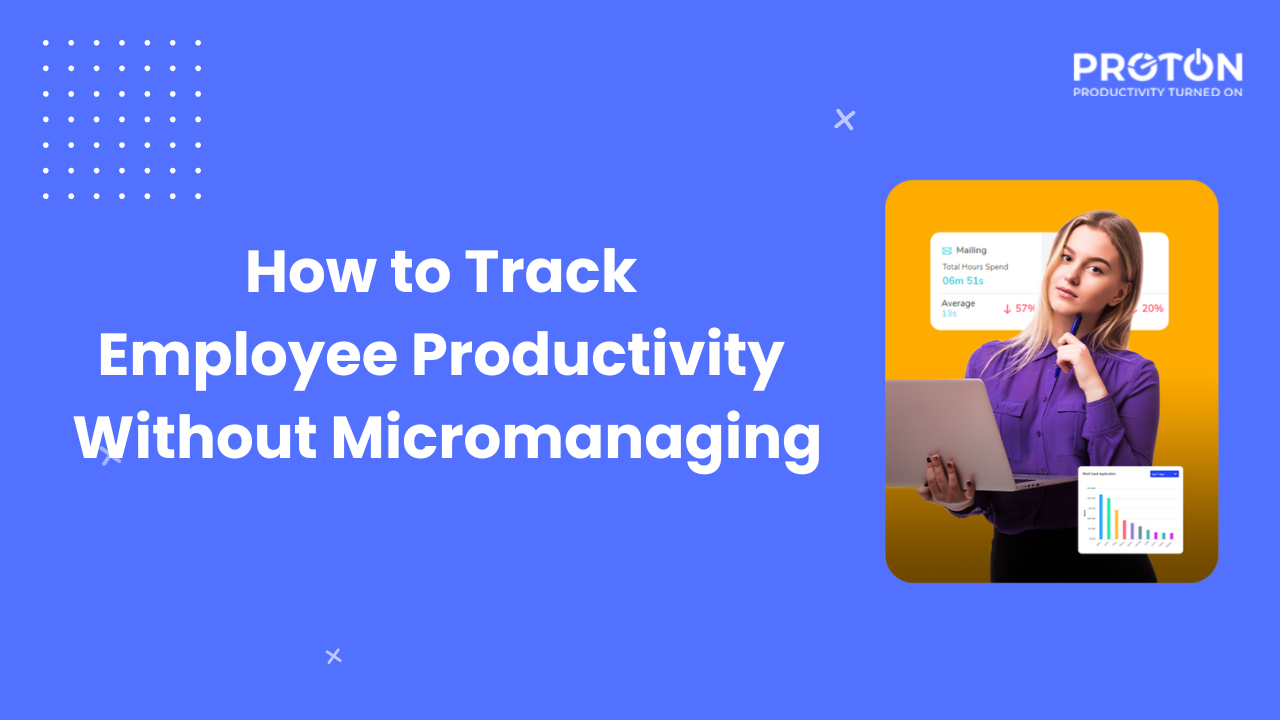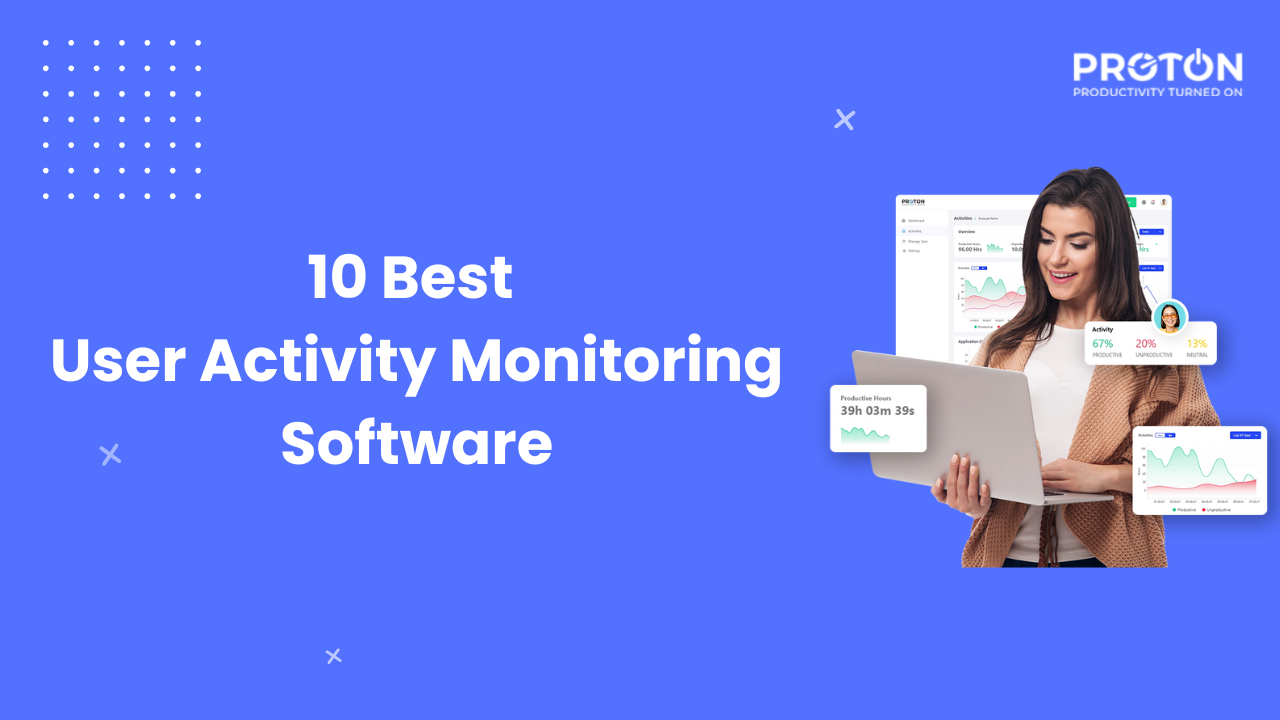Productivity is unarguably one of the main factors leading to organizational success. The ability of the employees to perform efficiently and effectively influences the profitability, innovation, and competitiveness of any business.
Other than the financial advantages, employee productivity brings customer satisfaction, plus, it boosts employee morale. Thereby, illustrating its crucial role in cultivating a positive work environment.
However, several variables influence employee productivity, these include the work environment, employee engagement, training, and access to relevant tools and resources. Consequently, all these factors contribute to the workplace dynamics that instate how tasks are completed, goals are achieved, and ultimately the success is attained.
So, let’s check out ways to measure and improve employee productivity in your organization.
Key Metrics for Measuring Productivity
A. Time tracking and analysis
Time tracking is an invaluable instrument for understanding where and how your organization’s office hours are spent. The emphasis, though, is not on the constant surveillance of time by relying on clockwork. But rather on understanding how time is managed and how to use it efficiently. It’s akin to having a detailed plan for the workday.
By monitoring time and undertaking comprehensive assessments about it, companies can identify tasks that consume more time than necessary, enabling you to optimize your schedules for better efficiency.
B. Quantity and quality of work
Quality and quantity go hand-in-hand when it comes to boosting overall efficiency in any organization. The quantity of work completed indicates production, and preserving a high level of quality guarantees that productivity is preserved.
If you can achieve this balance between the two factors, you can enjoy long-term productivity. This is because it puts equal emphasis on achieving goals while producing high-quality work.
C. Project completion rates
Taking note of the project completion rate provides a holistic view of the progress made by both individuals and teams. This measure is about ensuring that project milestones and goals are met promptly. With the help of completion rate assessment, teams can focus on finding potential bottlenecks and making proper resource allocation decisions within time constraints. Furthermore, this also encourages management of projects in a structured way with accountable performance, and attainment of targets.
D. Employee satisfaction and feedback
Employee satisfaction is closely associated with productivity. If the workforce is happy and contented it is more likely to be reflected in their performance. They will stay more focused and committed to their job roles.
To gauge employee satisfaction, collecting feedback from team members periodically is one crucial step. With this, organizations can gain an understanding of possible factors impinging on productivity and hence act promptly.
However, a positive work environment also has a role to play in this. Productivity does not just involve task completing tasks on time but also creating an encouraging culture where people are happy and healthy.
Tools for Productivity Measurement
A. Proton
Are you looking for a one-stop solution to beat productivity woes in your organization? If yes, then without a doubt opt for Proton.
Proton productivity software is a comprehensive solution designed to enhance work efficiency and collaboration. With its user-friendly interface and powerful features, Proton is tailored to meet the diverse needs of individuals and teams. From efficient time tracking to seamless project management, Proton is equipped to elevate your productivity to new heights.
Features
- Intuitive Interface with user-friendly design for easy navigation.
- Time tracking features for precise monitoring of time usage and analysis.
- Task Prioritization for effective time management.
- Milestone tracking and progress updates to foster collaboration.
- Detailed analytics for insights into productivity trends and improvement areas.
- Seamless integration with various tools and platforms for enhanced workflow.
- Support for goal setting and monitoring personal and team objectives.
- Built-in features to facilitate communication and teamwork within projects.
- Feedback Mechanism to cultivate a culture of improvement.
- Customization Options to tailor the software to unique needs and preferences, ensuring adaptability to different workflows.
Thus, Proton is your all-in-one solution for efficient and personalized productivity management.
B. Project management software (Not mention any tool name, explain in general)
In today’s fast-paced work environment having a robust project management software is imperative to enhance employee productivity. It facilitates cooperation, ensures effective resource allocation, and streamlines processes. Moreover, these software are tailored to meet the dynamic needs of modern workplaces. They serve as a centralized operation base where teams can plan, execute, and track project progress seamlessly.
From managing tasks to assigning deadlines and facilitating collaborative communication to offering performance metrics, project management software ensures goal achievement a hassle-free way.
Strategies and Tips for Improving Employee Productivity
A. Employee training and development
Investing in consistent employee training and development is a strategic move to cultivate skills and confidence in the workforce. By being offered opportunities for continuous learning, individuals feel empowered. They exhibit positive efforts to enhance their skills and knowledge to add to the organization’s growth. Furthermore, with a well-trained team, organizations can stay ahead of the current trends and facilitate increased employee involvement for better productivity.
B. Creating a positive work environment
Fostering a positive work environment acts as a stimulant for heightened employee productivity. This involves encouraging open communication, fostering teamwork, and recognizing individual contributions. When employees feel valued and supported, job satisfaction increases, leading to higher levels of engagement. A positive atmosphere promotes collaboration, creativity, and a sense of belonging, ultimately creating a workplace where individuals are motivated to excel, resulting in increased productivity and overall job fulfillment.
C. Providing the right tools and resources
The key to maximizing performance is providing staff with the appropriate resources and tools. This entails having easy access to modern workspaces, cutting-edge technology, and readily available information. By removing obstacles and ensuring a seamless workflow, organizations empower their employees to concentrate on their tasks without unnecessary hindrances. Giving the necessary resources does not only improve efficiency but also, creates a feeling of empowerment and confidence where people can utilize their capabilities to the fullest.
D. Recognizing and rewarding achievements
Recognition and rewarding achievements is a potent factor in boosting motivation among employees. Be it through formal recognition programs or simple expressions of appreciation, recognizing employees for their efforts fosters a positive workplace culture. This encourages a sense of accomplishment and pride in one’s work. Further, a continuous stream of recognition for accomplishments persuades employees to maintain a high-performance standard, promotes loyalty, and contributes to an environment where people feel valued and passionate about performing well.
Conclusion
In a nutshell, measuring and improving employee productivity is achieving the right mix of helpful tips and state-of-the-art tools. It’s about keeping an eye on how things are going and using tools that make it better. , and making sure employees are feeling positive and contended.
By combining the aforementioned smart tips with easy-to-use technology, organizations can establish a workplace where employees are motivated and content. They can do their best without any hesitation.
Well, it’s not just about getting work done; it’s about making work better for everyone. When you can transform these ideas into action, you build a workplace place where people are happy, efficient, and motivated to push their productive limits each day.


